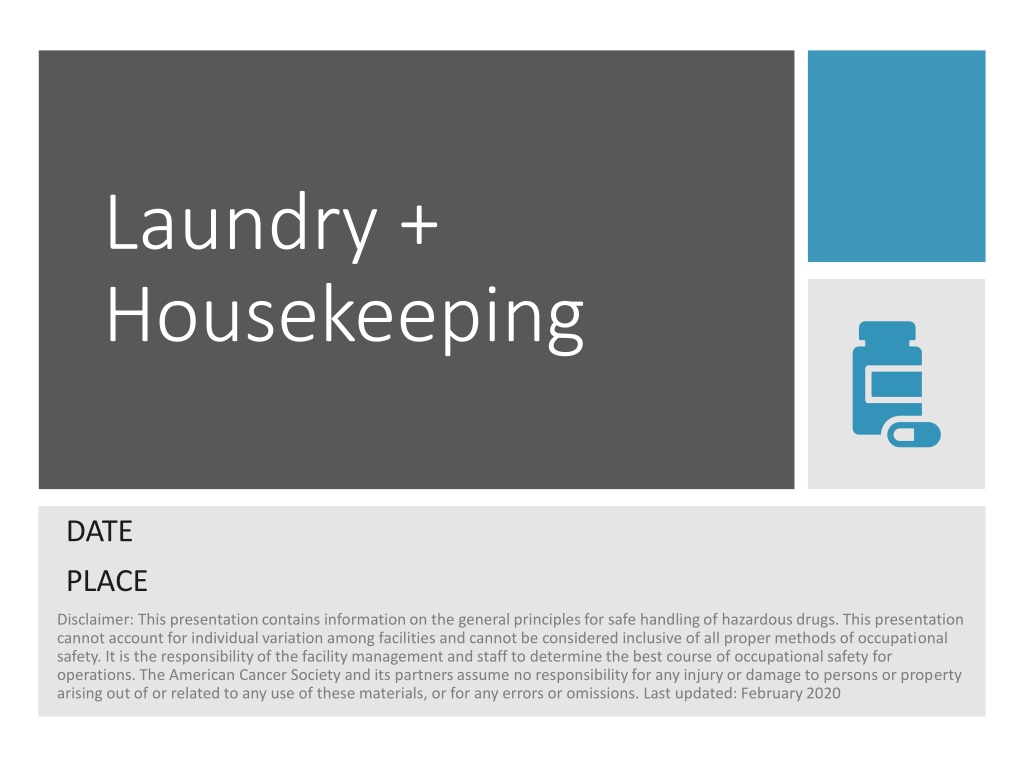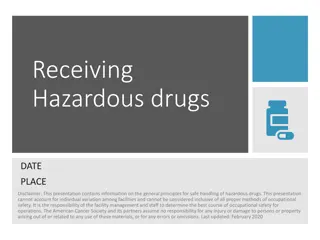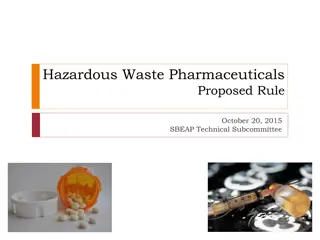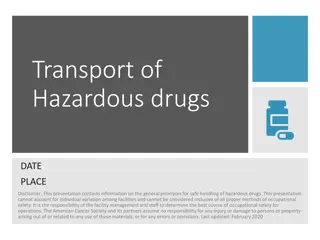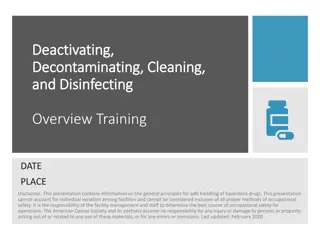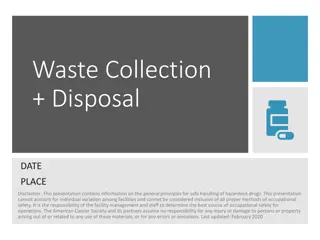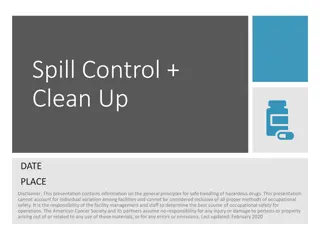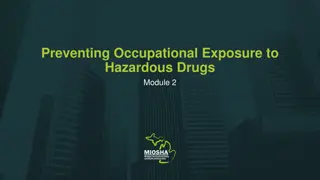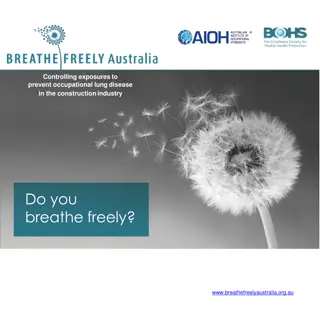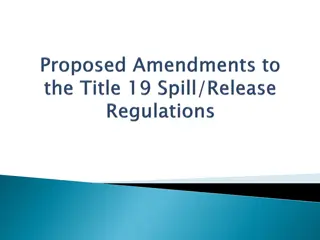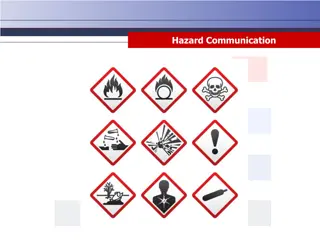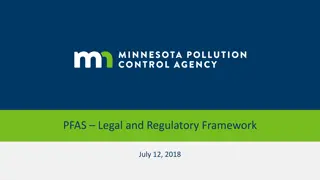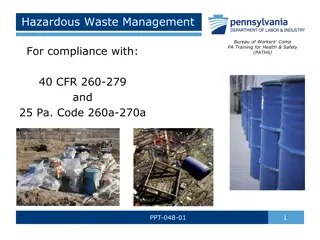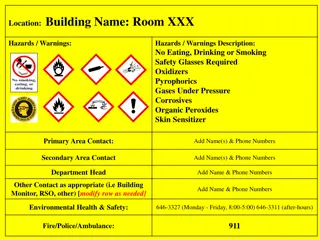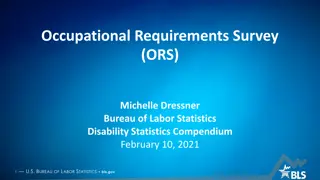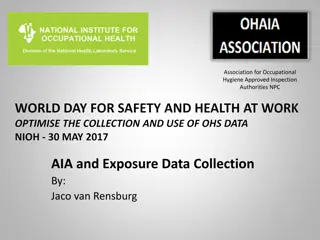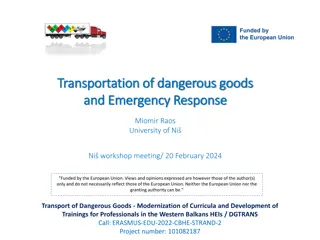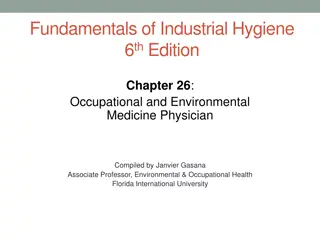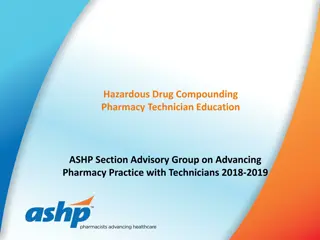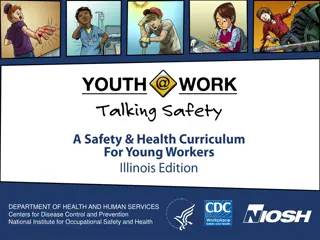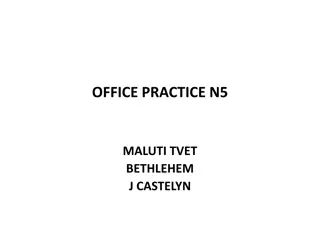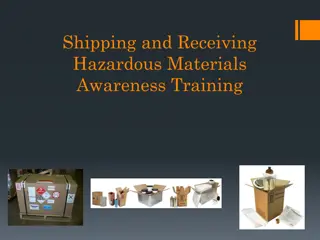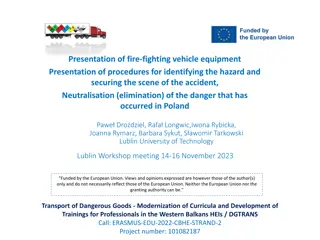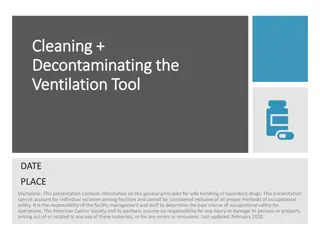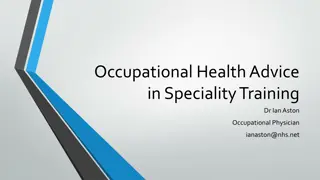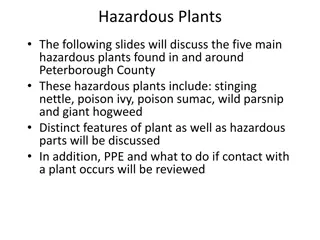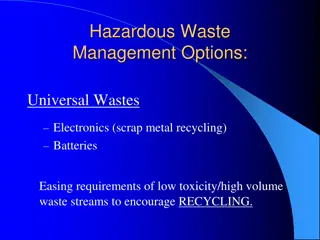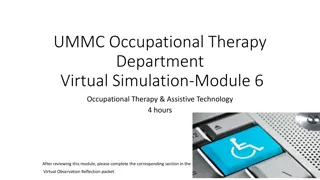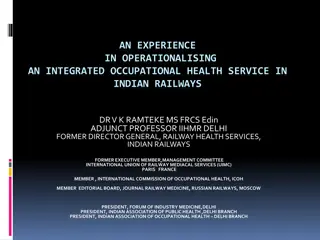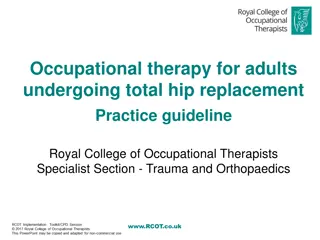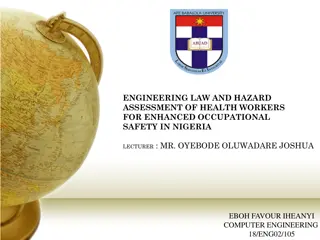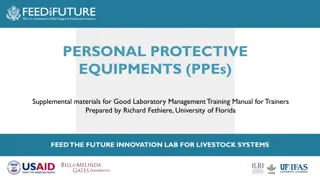Occupational Safety Training in Handling Hazardous Drugs
This presentation provides guidelines and training modules for staff responsible for cleaning areas where hazardous drugs are handled, including laundry and housekeeping tasks. Topics cover personal protective equipment recommendations, cleaning procedures, disposal processes, and hygiene practices. Emphasis is placed on safety measures to protect staff from exposure to hazardous materials.
Download Presentation

Please find below an Image/Link to download the presentation.
The content on the website is provided AS IS for your information and personal use only. It may not be sold, licensed, or shared on other websites without obtaining consent from the author. Download presentation by click this link. If you encounter any issues during the download, it is possible that the publisher has removed the file from their server.
E N D
Presentation Transcript
Laundry + Housekeeping DATE PLACE Disclaimer: This presentation contains information on the general principles for safe handling of hazardous drugs. This presentation cannot account for individual variation among facilities and cannot be considered inclusive of all proper methods of occupational safety. It is the responsibility of the facility management and staff to determine the best course of occupational safety for operations. The American Cancer Society and its partners assume no responsibility for any injury or damage to persons or property arising out of or related to any use of these materials, or for any errors or omissions. Last updated: February 2020
Staff who clean areas where hazardous drugs (HDs) are handled Who should take this training? Staff who clean the linens or rooms used by patients receiving HDs These staff may include cleaners, technicians, and nurses 2
Training Modules + Learning Objectives List personal protective equipment (PPE) recommendations for cleaning List cleaning recommendations Describe process for disposal and hygiene General Housekeeping List PPE recommendations for laundry and linens Describe considerations that should be taken when handling linens List steps for washing contaminated laundry Laundry + Linens 3
Cleaning should proceed from the cleanest area to the dirtiest area of the room. All surfaces are cleaned with water for irrigation and detergent to remove loose material and water- soluble residues. General Cleaning Recommendations 5 Reference 1
Personal Protective Equipment (PPE) An N95 respirator if activities warrant Fluid-resistant closed- front gown Goggles or face shield if splashing is possible Protective double gloves that are chemically resistant to the products used Wear appropriate PPE for cleaning and decontaminating work. Reference 1,2 6
PPE Recommendations Make sure the gloves are chemically resistant to the detergent, cleaning, disinfection and deactivation agents used. Wear goggles or face shields if splashing is possible. PPE should also be worn when cleaning bathrooms and toilet facilities. Wash hands thoroughly with soap and water immediately after removing gloves. Reference 1 7
Cleaning Materials Cleaning materials (for example; wipers, mops, and disinfectants) should be made of materials that generate a low amount of particles. Disposable cleaning materials are recommended and after use these should be disposed of along with other cytotoxic waste. If cleaning tools are reused, their cleanliness should be maintained by thorough cleaning and disinfection after use and by storing in a clean environment between uses. 8 Reference 1
Disposal + Hygiene Collect waste in suitable plastic bags that are sealed and removed with minimal agitation. Dispose of the gown Remove gloves Wash hands Reference: 1,2 This Photo by Unknown Author is licensed under CC BY-SA 9
The risk of exposure exists when people come into contact with clothing or linen contaminated with urine, feces, vomit, sweat, saliva or blood from a patient treated with cytotoxic drugs. 11
Access to Personal Access to Personal Protective Equipment Protective Equipment Wear two pairs of protective gloves and a disposable gown if you must handle linens (both non-washed and prewashed) Chemotherapy- tested gloves Disposable Gown Reference: 1,2 12
Consider that the middle of the linen, especially the pillow case, the feet, and the pelvic area could be highly contaminated. To avoid the generation of dust, do not shake the linen. 13 Reference 1
Linen contaminated with HDs should be placed in specially marked laundry bags and then placed in a labeled and impervious bag. Contaminated linen should be labeled as Hazardous Contamination . If possible, use disposable linen. 14 Reference 1 This Photo by Unknown Author is licensed under CC BY-SA-NC
Washing Patients in Bed In order to reduce or contain contamination, patients who need to be washed in bed should be washed with disposable moist tissues. 15 Reference 1
Linen and clothing should be considered as potentially contaminated materials and should be gathered in labeled containers. Keep the contaminated laundry separate from other laundry. 16 Reference: 1 This Photo by Unknown Author is licensed under CC BY-SA
Washing Laundry Wash the contaminated laundry separately from other laundry. Start the washing process with a cold water cycle. Restart the washing process with the normal washing process. 17 Reference 1
1. Connor T, McLauchlan R, Vandenbroucke J. ISOPP Standards of Practice: Safe Handling of Cytotoxics. J Oncol Pharm Pract. 2007;13(1) 2. NIOSH Alert: preventing occupational exposures to antineoplastic and other hazardous drugs in health care settings. U.S. Department of Health and Human Services, Public Health Service, Centers for Disease Control and Prevention, National Institute for Occupational Safety and Health, DHHS (NIOSH) Publication No 2004 165; 2004 References 18
